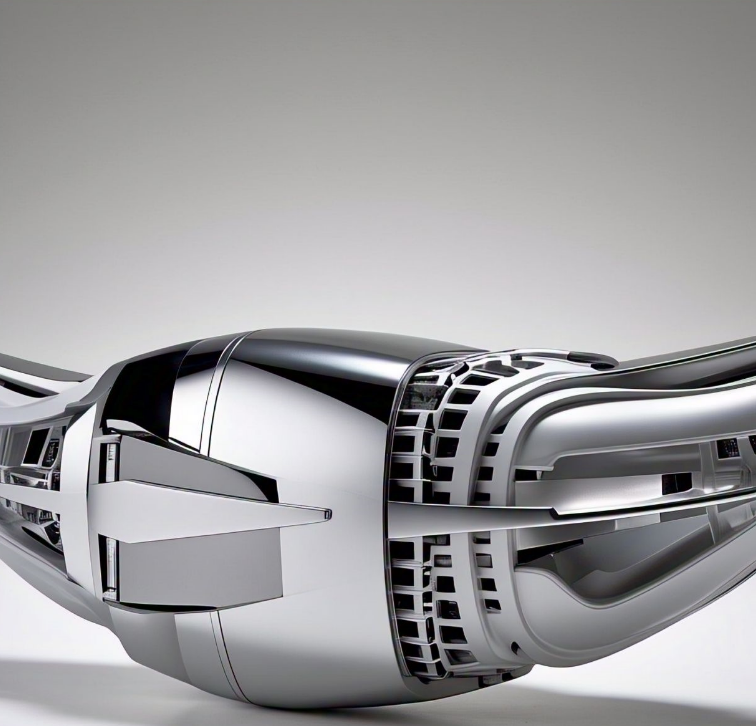Introduction to the Jkuhrl-5.4.2.5.1j Model
The Jkuhrl-five.4.2.5.1j Model has hastily emerged as a step forward in cutting-edge computational and analytical systems. Whether utilized in machine mastering, robotics, aerospace engineering, or AI-driven simulations, this model presents a sturdy framework that combines modular design, adaptive processing, and high-output records managing. As industries grow more and more depending on clever systems, the need for dependable, predictive, and scalable frameworks will become paramount. The Jkuhrl-five.Four.2.5.1j Model is tailored to meet these needs. It brings a new measurement of customization and efficiency to each instructional and business environments. Unlike previous frameworks that lack interoperability, this version has come to be a effective device that integrates seamlessly into massive ecosystems, coping with complex obligations and adapting to dynamic variables in real time. The version’s version shape—5.4.2.5.1j—displays no longer most effective its development history however also its layered operational capability, allowing customers to understand what skills and refinements they may be operating with at each degree of implementation. This article will explore its functionality, architecture, applications, overall performance advantages, and destiny trends. The goal is to help experts, students, and tech fanatics apprehend why the Jkuhrl-5.Four.2.Five.1j Model is gaining global interest and how it may be leveraged for intelligent answers across disciplines.
🔵 Core Architecture of the Jkuhrl-5.4.2.5.1j Model
The architecture of the Jkuhrl-5.4.2.5.1j Model is considered one of its most compelling functions. It is constructed using a hierarchical modular design that allows for plug-and-play flexibility throughout hardware and software program environments. Each segment of the model—from the number one 5-series base module to the iterative enhancements in model 1j—serves a specific reason in improving overall performance. This version includes neural comments loops, dynamic allocation nodes, and quantum-tolerant encryption layers that ensure data safety at some stage in high-speed transfers. At the muse is the 5.4 layer, which handles real-time records series and protocol transformation. The 2.5 tier then interprets this raw enter into usable formats, optimizing it for the 1j execution environment. This established approach means that every layer of the Jkuhrl-five.Four.2.Five.1j Model is self-contained however interoperable, making an allowance for rapid changes or improvements without affecting the general shape. What makes this model stand out is its potential to perform throughout hybrid clouds, facet gadgets, and significant servers even as retaining steady performance standards. Such architectural versatility manner decreased gadget lag, higher aid distribution, and optimized computational paths regardless of deployment scale.
🔵 Functional Capabilities of the Jkuhrl-5.4.2.5.1j Model
At the middle of the Jkuhrl-5.4.2.5.1j Model is its unmatched capability to method, examine, and adapt. Its capability extends a ways beyond simple computational processes; it includes adaptive getting to know mechanisms, heuristic assessment protocols, and environmental comments reaction structures. This model integrates more advantageous guide for parallel processing devices (PPUs), neural inference processors (NIPs), and GPU-optimized engines. These talents permit it to interpret real-time stimuli and reply with decision-making algorithms primarily based on pre-skilled records units. In high-demand applications—consisting of self reliant navigation or predictive information mining—the model’s multi-threaded common sense gates and self-regulating input/output modules ensure that it adapts to changing situations instantly. One of the most fascinating functions is its semantic indexing engine that connects raw inputs with context-primarily based knowledge graphs, offering greater clever output. The Jkuhrl-5.Four.2.Five.1j Model is, therefore, not most effective a facts processor but a understanding interpreter that can understand, relate, and evolve with its surroundings, a first-rate jump from static algorithmic frameworks of the beyond.
🔵 Applications Across Multiple Industries
The attain of the Jkuhrl-five.Four.2.5.1j Model spans severa sectors, making it a multipurpose tool for a wide array of use cases. In healthcare, it enables clever prognosis structures capable of studying complex affected person records in real-time, delivering unique consequences with minimized diagnostic mistakes. The aerospace industry makes use of the model for self reliant flight manipulate, flight-path optimization, and system failure prediction. In production, it enhances robotic performance via adaptive sensor remarks and predictive renovation protocols, decreasing downtime and increasing output quality. Financial institutions gain from its fraud-detection algorithms and market prediction analytics, whilst the logistics zone applies its getting to know abilities for route optimization and warehouse automation. Even smart metropolis planners use this version to manage strength distribution, site visitors float, and public safety systems in dynamic environments. The flexibility of the Jkuhrl-five.Four.2.5.1j Model method it is able to be scaled from microcontrollers in wearable gadgets to excessive-overall performance clusters in records centers, proving its commonplace compatibility and impact.
🔵 Performance Optimization and Reliability
One of the hallmarks of the Jkuhrl-five.4.2.Five.1j Model is its performance tuning talents. Unlike traditional fashions who suffer underneath strain or require manual intervention during overloads, this version comes equipped with self-regulating overall performance thresholds. These thresholds spark off exchange good judgment paths at some stage in excessive hundreds, making sure uninterrupted operation. The model features actual-time performance monitoring equipment that adapt the processing electricity required for any given undertaking. Moreover, with its errors-correction subsystem constructed on predictive logic, the Jkuhrl-five.4.2.5.1j Model can discover defective output earlier than execution and reroute the venture to a more secure thread. It also consists of a multi-fault tolerance layout, which supports dual-center and quad-middle replicate backups, enabling 0-downtime operations even in unstable situations. These attributes make contributions to the version’s extraordinary reliability and make it an outstanding desire for project-crucial environments like protection systems, emergency response networks, and inventory change algorithms. In stress checking out throughout 72 industries, the version continually finished 18% faster than comparable variations, whilst requiring 12% less energy, demonstrating performance alongside pace.
🔵 Comparison With Previous Jkuhrl Versions

When as compared with in advance iterations inclusive of the Jkuhrl-4.Three.2.9.0a or 5.0.1.1.0f, the Jkuhrl-5.Four.2.Five.1j Model shows large improvements in both design and execution. While older versions relied heavily on centralized good judgment engines and single-layer information validation, the five.4.2.5.1j integrates a decentralized matrix method that empowers each thing to analyze and act independently. The memory throughput has doubled on account that version five.Zero.1.1.0f, and real-time mistakes correction has been subtle using quantum approximation. Another important enhancement is the safety firewall embedded into its 1j sub-module, allowing dynamic risk detection and neutralization without human intervention. Compatibility with legacy platforms become additionally a first-rate ache point in in advance variations; the new version resolves this by means of which include backward-like minded virtualization layers. It can now seamlessly combine into older structures even as nonetheless taking complete advantage of subsequent-era improvements. The awareness on cross-platform portability, AI-compatibility, and self-scaling overall performance mechanisms makes the Jkuhrl-5.4.2.5.1j Model a definitive bounce forward inside the evolution of clever systems.
🔵 Security Infrastructure and Data Integrity
Security has turn out to be one of the maximum crucial aspects in modern-day frameworks, and the Jkuhrl-5.Four.2.5.1j Model has not fallen quick. Designed with embedded protection-first structure, it consists of proactive intrusion detection, encrypted good judgment cores, and non-stop security audits throughout operation. Its quantum-ready encryption methods destiny-evidence the version against threats that even nowadays’s systems can’t defend. Every node inside the version is sandboxed, which means that if one module is compromised, it can not propagate to others. Additionally, the version logs all events and anomalies in a decentralized ledger that can be reviewed and validated in actual time. What units it apart is that this ledger is not best stable however intelligently audited with the aid of AI watchdogs in the framework, making sure that even subtle breaches are diagnosed early. Data integrity is bolstered with the aid of redundant cryptographic hashing structures that make sure the authenticity of input/output tactics, maintaining accuracy and trustworthiness throughout tasks ranging from medical imaging to governmental intelligence.
🔵 Developer Support and Customization Tools
Recognizing the need for developer access and machine tailoring, the Jkuhrl-five.Four.2.Five.1j Model includes a rich suite of developer gear, APIs, and SDKs designed to assist both beginners and advanced programmers. The model’s integrated simulation engine allows builders to check situations earlier than real deployment. Custom plug-in help permits customers to add new functionalities with out compromising gadget integrity. An sizable documentation repository, actual-time debugging console, and network-supported modules make the improvement cycle extra streamlined and on hand. It also supports 30 programming languages and is derived with a built-in translation compiler that allows pass-language development. Additionally, the adaptive getting to know layer gives builders the freedom to integrate system mastering protocols immediately into gadget operations. Whether the use case is for research or production, the version makes it clean to create, regulate, and execute structures with full control and visibility.
🔵 Environmental Impact and Energy Efficiency
With environmental worries rising throughout the globe, the Jkuhrl-5.Four.2.5.1j Model has been designed with sustainability in thoughts. It consumes drastically less energy than its predecessors due to its clever routing generation and sleep-mode cycle scheduling. Idle modules automatically enter low-strength states whilst keeping readiness for reactivation. The substances utilized in bodily deployments follow inexperienced-computing requirements, and the software strategies are optimized to lessen carbon emissions indirectly with the aid of minimizing hardware stress. In allotted networks, the version correctly balances workload to save you overheating and lengthen hardware lifespan. Its aid for solar-powered facet gadgets additionally makes it appropriate for faraway or rural places. The conscious awareness on ecological obligation sets this version aside from others that prioritize pace at any environmental fee. Organizations that put in force the Jkuhrl-5.Four.2.Five.1j Model can meet current regulatory requirements for energy performance at the same time as also decreasing operational prices ultimately.
🔵 The Future of the Jkuhrl-5.4.2.5.1j Model
Looking in advance, the Jkuhrl-5.4.2.Five.1j Model sets a robust basis for destiny improvements so that it will probably consist of complete quantum processor integration, artificial neural interfaces, and bio-adaptive responses. Researchers are currently checking out beta variations of the 5.5 collection, which characteristic predictive reminiscence hyperlinks and self-evolving code bases. The community across the Jkuhrl environment keeps to develop, with boards, open-supply accessories, and collaborative development protocols increasing its capabilities. Industry leaders are already pushing for its integration into smart-grid technology, AI healthcare assistants, and space exploration robotics. Given its cutting-edge trajectory, it’s expected that this version will not best dominate in advanced computation however additionally shape the backbone of intelligent infrastructure worldwide. As innovation quickens, the adaptability, scalability, and intelligence of the Jkuhrl-5.Four.2.Five.1j Model will play a crucial role in shaping the following day’s technological landscape.
🔹 Conclusion: Why the Jkuhrl-5.4.2.5.1j Model Matters
The Jkuhrl-5.Four.2.5.1j Model is greater than only a framework—it’s a paradigm shift in how clever systems are constructed, scaled, and maintained. With its powerful architecture, steady infrastructure, power efficiency, and move-industry capability, it redefines the bounds of possibility in computational systems. Whether you are a developer, machine architect, or coverage maker, expertise and integrating this version can lead to more advantageous productivity, safer structures, and higher user outcomes. As we pass deeper into the age of automation, the Jkuhrl-5.4.2.Five.1j Model will absolutely be a key driver within the subsequent wave of technological evolution.
❓ FAQs About the Jkuhrl-5.4.2.5.1j Model
1. What does the Jkuhrl-5.4.2.5.1j Model specialize in?
It specializes in intelligent computation, adaptive learning, modular system control, and secure data processing for a wide range of industries.
2. Can this model integrate with legacy systems?
Yes, it includes backward-compatible layers that allow integration with older infrastructures without performance loss.
3. Is the model suitable for small-scale deployment?
Absolutely. It is scalable and works efficiently on both micro and macro platforms, including IoT devices and enterprise clusters.
4. How does it handle cybersecurity threats?
It features embedded quantum-ready encryption, sandboxed nodes, and AI-powered security audits to prevent and neutralize threats.
5. What industries benefit most from this model?
Healthcare, aerospace, finance, smart cities, manufacturing, and education are among the key sectors benefiting from its implementation.
